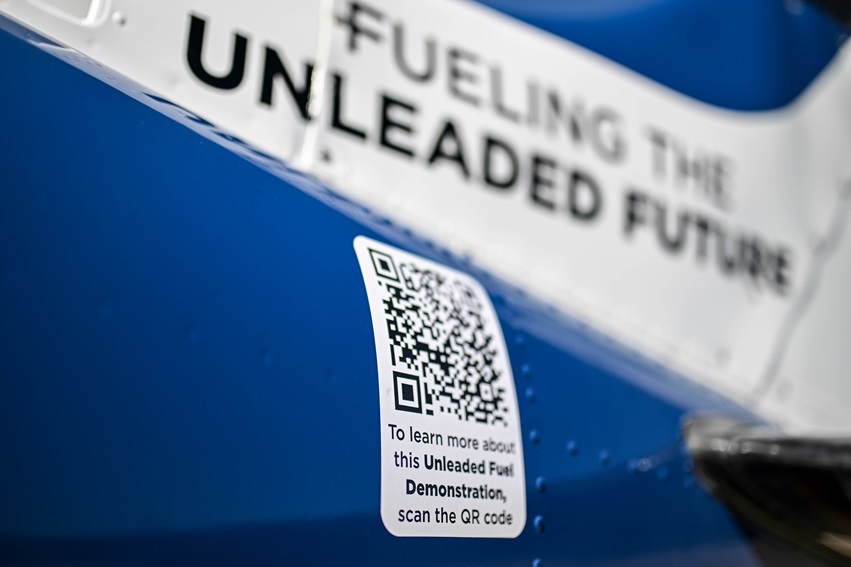One airplane, two fuels
AOPA puts unleaded fuel to the test
The idea couldn’t be simpler: To learn about the real-world performance of unleaded aviation fuels, AOPA will measure them against leaded avgas in a twin-engine airplane.

The unleaded fuel will go in the left wing and feed the left engine. Leaded avgas (100LL) will go in the right wing and feed the right engine.
“We want to get some actual experience with 100 octane unleaded fuel in the kinds of airplanes and engines that our members own and fly,” said AOPA President Mark Baker. “This fuel has been tested extensively in labs and received an STC. Should the FAA authorize additional fuels, we’ll test them, too, so we can see what they’re like to use out on the airways.”
AOPA is leasing a newly refurbished 1966 Beechcraft Baron C55 from Greg Herrick of Wyoming for $1 a year to monitor the unleaded fuel demonstration that is expected to last up to two years. Donor Dan Shewmaker will offset operational costs.




The airplane—N202MD—is equipped with two freshly overhauled, normally aspirated (nonturbocharged) Continental IO-520 engines. It also has new Garmin avionics including an engine monitor capable of recording a wide variety of engine data.
By closely comparing two engines operating at the same time on the same airframe, AOPA is trying to eliminate as many variables as possible while evaluating the different fuels. AOPA will share its findings with members via AOPA media channels.
Pinnacle Aircraft Engines in Alabama overhauled the Baron’s engines, and Smart Avionics in Pennsylvania installed the new avionics.
Baker is a highly experienced Baron owner and pilot. He traveled to Ada on October 31 and flew the AOPA fuel demo Baron for one hour with G100UL feeding the left engine and 100LL in the right. He said the performance of the two engines was nearly identical and the Baron flew beautifully. The flight included several full-power takeoffs and a prolonged high-power cruise at more than 75-percent power.
“George Braly and GAMI have done a great deal of pioneering work preparing for general aviation’s unleaded future,” Baker said. “We’re bringing the AOPA Baron to GAMI’s headquarters in Ada, Oklahoma, first to try out its G100UL.”
The airplane’s engines will undergo regular borescope inspections and compression tests to compare internal engine wear.
Mike Busch, founder of Savvy Maintenance and an AOPA Pilot magazine columnist, will analyze engine data from the Baron using Savvy’s computerized diagnostic tools. Savvy has gathered detailed engine data from hundreds of thousands of hours of GA flights and developed predictive diagnostic tools designed to anticipate engine component failures before they happen.
“We look forward to taking a close look at the data AOPA collects,” Busch said. “The fact that it’s being gathered from two engines on the same airframe makes it particularly interesting.”
N202MD had logged about 3,700 flight hours from the time it was manufactured until the early 2000s. Herrick, a vintage airplane collector and restorer, bought the Baron in 2010, and it’s been largely inactive for the past five years. Herrick paid for, and AOPA managed, a slew of recent maintenance that included reconditioning the fuel bladders, overhauling the engines and Hartzell propellers, and replacing and rerigging many of the landing gear components.
AOPA staff pilots ferried the airplane from Minnesota to Pennsylvania and Virginia for upgrades. Now, it’s ready to start logging some hours on unleaded fuel, and GA pilots look forward to getting detailed results.
“The move to unleaded fuel is absolutely critical to the future of general aviation,” Baker said. “This airplane is a valuable tool because it can help us make the transition safely and confidently.”




